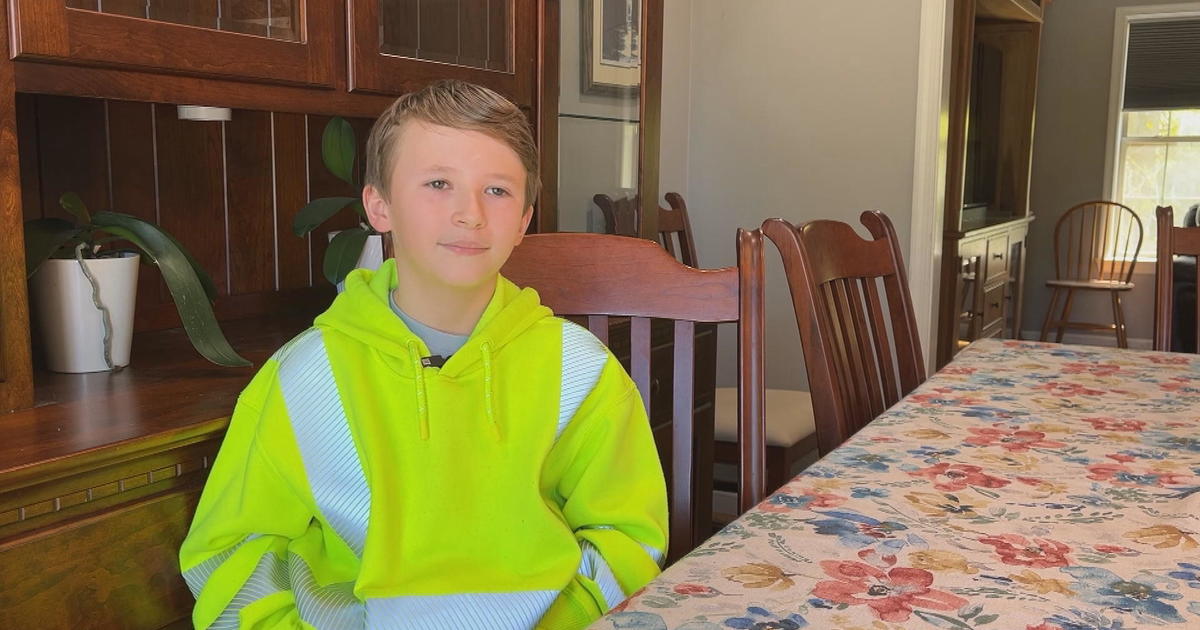Blue Bell Woman Helping Save Monarch Butterfly
By Molly Daly
BLUE BELL, Pa. (CBS) -- A Blue Bell, Montgomery County woman is doing her part to help Monarch Butterflies, whose numbers are dwindling because the one plant the caterpillars can eat is being wiped out by herbicide use and habitat loss.
Although the orange and black butterflies look delicate, they're tough, long distance travelers.
"They're the only butterfly that actually migrates all the way to Mexico for their overwintering," says Pat Sheinman, who is part of a nationwide effort to give Monarchs a safe start. "So there are a lot people like myself across the country who are raising them indoors to try to boost that population."
So Sheinman put out the welcome mat and planted milkweed.
"And sure enough, several females found my garden, and were nice enough to leave me with close to a hundred little presents," Sheinman says. "So I locate them as eggs or small caterpillars, bring them in, and I feed them whatever I found them on."
As the white, yellow, and black striped caterpillars grow over the next two weeks, Sheinman moves them to a plastic cup covered with netting that the larva will attach itself to, shed its skin, and form an inch-long chrysalis.
"They're gorgeous," she says. "They look like little jade jewels with little gold metallic dots on them. It's amazing that nature can create something like that."
In ten days to two weeks, when they get ready to emerge, "the chrysalis will get darker and darker," Sheinman says, "and you'll be able to see the wings of the butterfly through the chrysalis, which has become transparent."
When it emerges, or ecloses, the Monarch's wings look crumpled, and its body, very fat, because it's filled with fluid, which it pumps into the wings, which slowly straighten out, with a span of around four inches.
"It's really pretty amazing that something like that can happen," Sheinman says, "which is one of the reasons I think people like myself become so addicted to it, because that whole process of nature is so miraculous to see."
Sheinman says the butterflies need about two hours for their wings to completely dry before they're flightworthy.
"A lot of them don't fly, and don't even eat for the first 24 hours after they eclose," she says. "Which, when you're raising them, is good for somebody like myself who works full time because I know that I can leave them without food, without any assistance from me, before I release them."
"I usually release them early in the morning, and they're pretty sluggish, they really don't want to go," Sheinman says. "They seem to be solar powered! And if I wait a little later in the day, and I put them in a nice, sunny spot, I open the container, and off they go."
Before she does that, Sheinman tags the butterflies with tiny numbered labels she gets through Monarch Watch.
"That way, if somebody finds your butterfly that you tagged, they can check the database, and find out where it came from," she says. "This is how they know how far Monarchs travel, and how quickly."
Why does she do it?
"It feels like I'm doing a little something to help nature," Sheinman says. Nature has its hands full -- every little bit we can do to help is a good thing."
Can she imagine a world without Monarchs?
"No, I really can't. There are a lot of beautiful things in the world that I can't imagine being without," Sheinman says. "There are different things that are becoming endangered each day, and things that are going extinct, and I'd like to thing that through the efforts of myself, and all these other people across the country who are doing this, that maybe the Monarch is one we can turn around and save, and we won't have to see it in extinction in our lifetimes."
Click here for more information or visit the Monarch Watch Facebook page.




